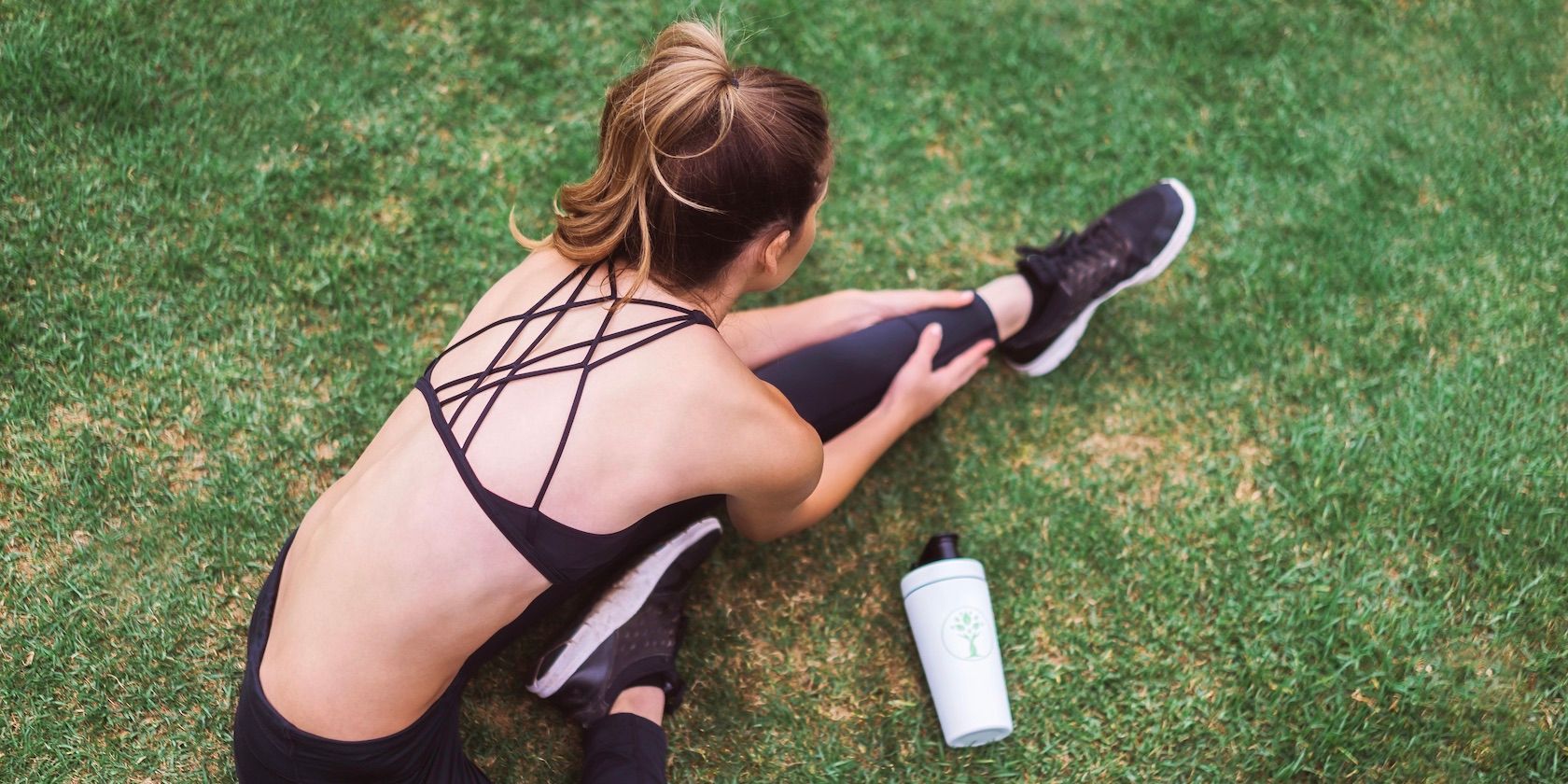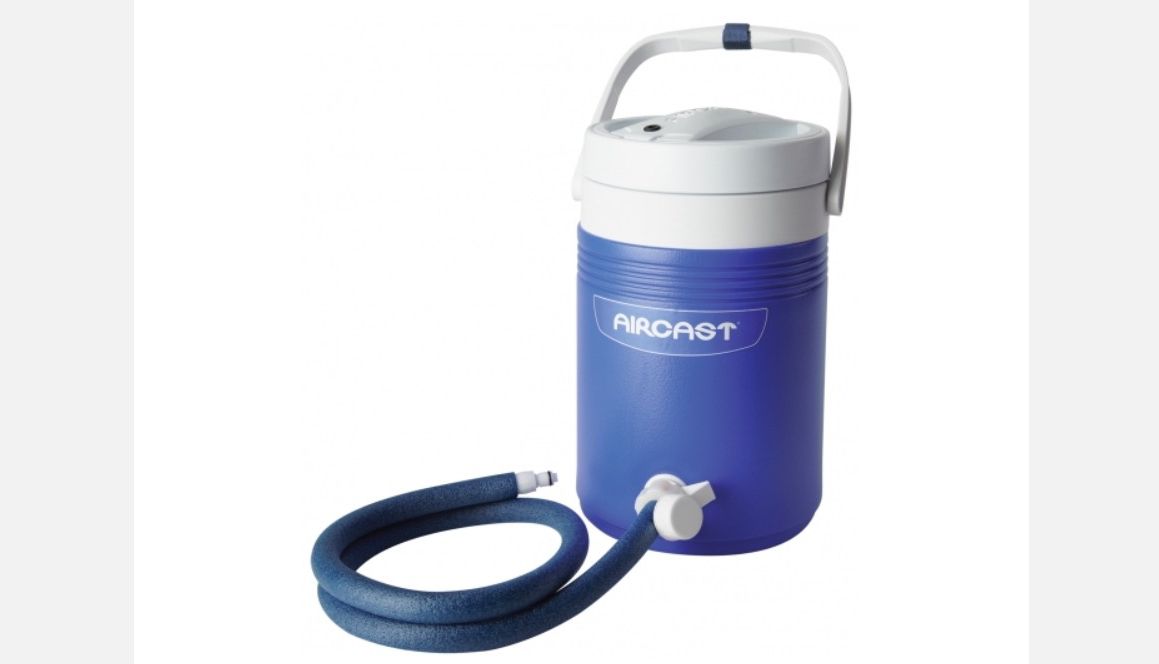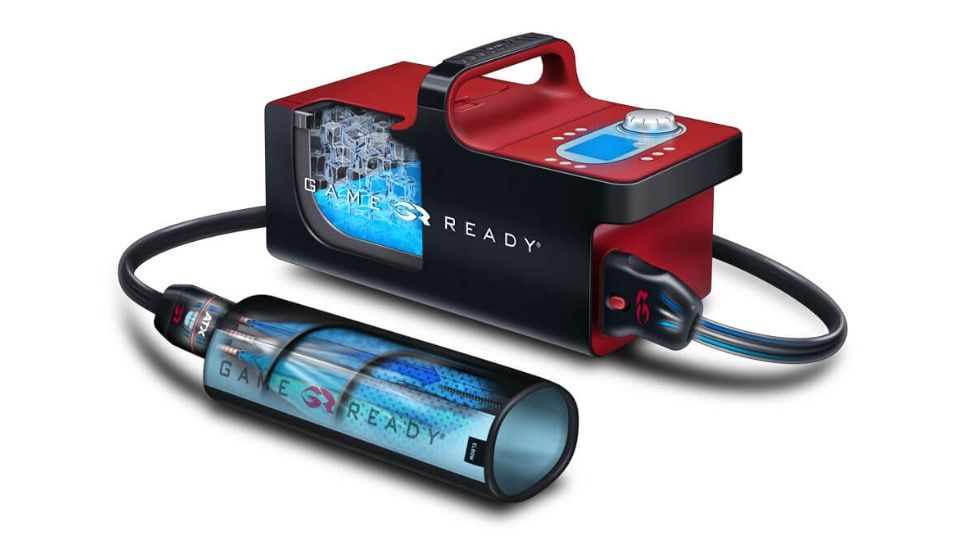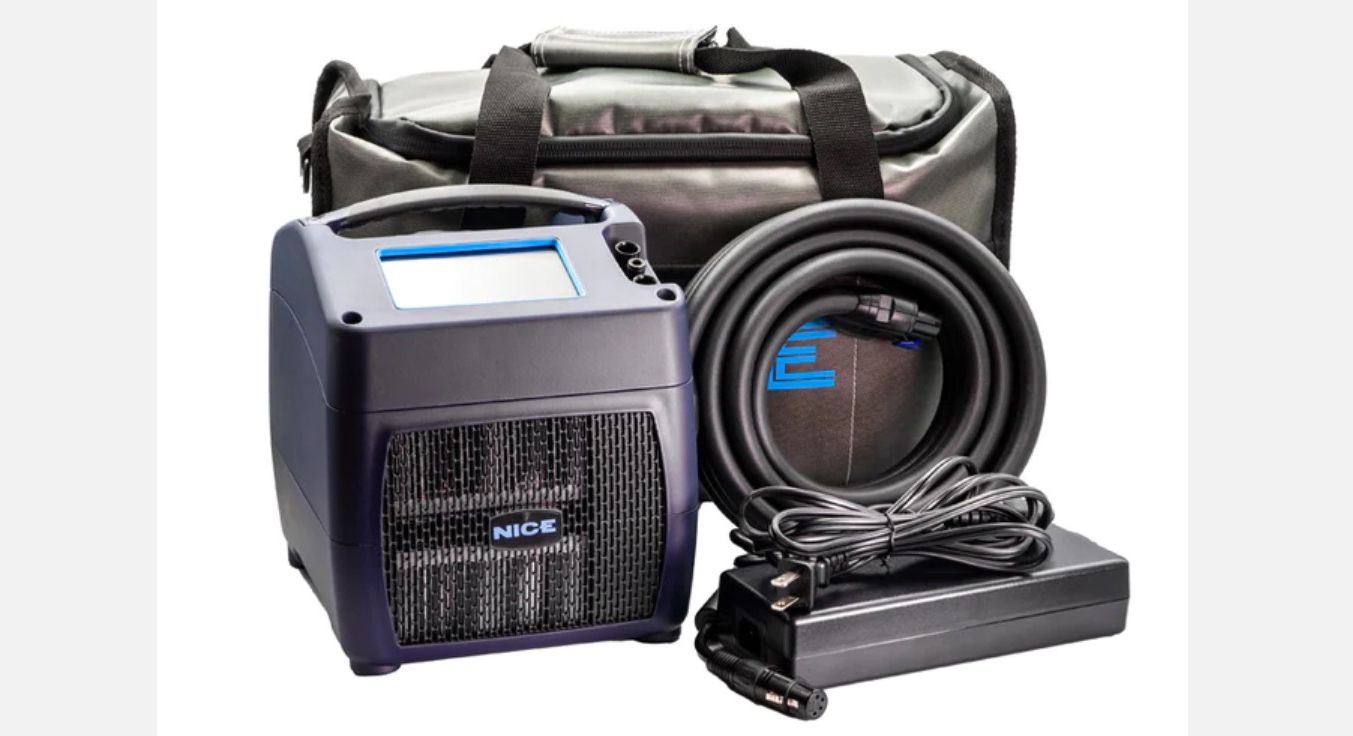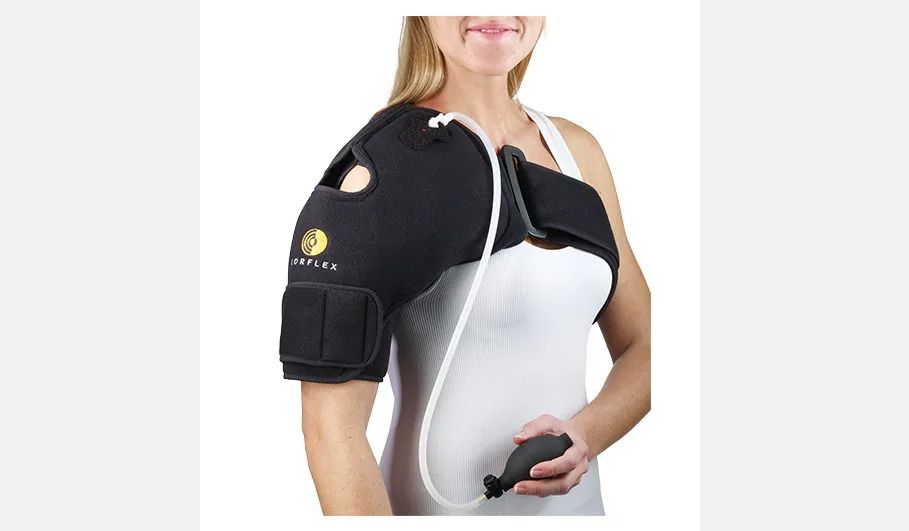You might shrink at the thought of jumping in an ice bath almost as much as if you actually took the plunge, but cold therapy has grown in popularity for a number of reasons. Claimed health benefits include everything from improved sleep and faster post-operative recovery to the ability to reduce inflammation, swelling, and sore muscles. For athletes, this could mean faster recovery and a quicker turnaround time between workouts.
Thankfully, you can benefit from cold therapy without actually dunking yourself in ice. Moreover, with these cold therapy devices, you can target specific parts of your body, which means every athlete can benefit from cold therapy without leaving their home—or even the couch.
1. Aircast Cryo Cooler
You probably know that you can use tech to help your muscles recover faster with everything from apps that help you cook healthy meals to smart water bottles and compression therapy devices. But cold therapy devices, such as the Aircast Cryo/CuffIC Cooler, deliver clinically proven results when it comes to improving your body's ability to recover, according to the company.
The Aircast Cryo/CuffIC Cooler uses an integrated pneumatic pump built within its lid to provide intermittent cold and compression therapy. The device is designed to support post-operative recovery and physical trauma, and can be used in the training room by physiotherapists and at home by any athlete.
2. Game Ready Cold Therapy
Much like the Aircast Cryo Cooler device, the Game Ready GRPRO 2.1 Cold & Compression Therapy Unit also integrates cold with intermittent compression therapy for a combination of modalities that can help you recover quickly. The GRPRO 2.1 is a sophisticated device that you can use with a range of body wraps to adapt to different parts of your body, from elbows and ankles to knees.
The device rapidly circulates ice water to specific body parts through one of many sleeves. Then, pneumatic compression is used to pump away swelling and stimulate blood flow. The system is portable and claims to be able cool parts of your body faster, deeper, and longer than either regular ice or other cold therapy other devices on the market.
3. Flexikold Gel Pack
If you're on a budget and looking for something more trustworthy than a bag of frozen peas, check out NatraCure's Flexikold Gel Cold Pack. These flexible ice packs are touted as America's best-selling cold pack brand. Ice packs are the original form of cold therapy and are still used today by athletes, physiotherapists, and healthcare professionals. Unlike a block of ice, the gel included in the Flexikold Gel Cold Pack stays flexible when cold. And because these devices are thin, they can be wrapped around body parts for increased surface area contact.
The Flexikold is available in three sizes, can be purchased in pairs on Amazon, and is washable and reusable. That makes it the perfect device for people who have never used cold therapy before, including athletes looking for post-workout relief.
4. Nice Recovery Nice1
The Nice Recovery Nice1 Cold + Compression Therapy System differs from other devices because it is a completely ice-less system. While it's larger than a regular ice pack, Nice Recovery claims to be the smallest and lightest cold and compression therapy device on the market. It includes a graphical touch screen used to operate the device. The entire device weighs 9 pounds and measures 8 inches by 8 inches in size.
Nice Recovery also sells sleeves that you can use with the Nice1 system. Sleeves are available for your ankle, hip, knee, and shoulder, but beware, the device and the sleeves are not cheap. That said, if you're serious about recovery and want a cold therapy device that can do it all, check out the Nice1 system.
5. Coreflex Cryotherm Pneumatic
The Coreflex Cryotherm Pneumatic Shoulder is another consumer device that combines the benefits of cold and compression. Because it's designed specifically for use on a single body part (the shoulder), the applicability of this device is limited; however, the price is much more digestible than offerings by other companies.
The device features a detachable pump that you can use to increase pressure, which helps reduce swelling, decrease pain, and speed up recovery. To cool your shoulder, the device uses a removable gel pack that you can throw in the freezer ahead of time. The main downside is that the device will warm up as you use it and won't maintain a steady cool temperature. However, this might not be bad, as cold therapy is typically intended to be used for short periods of time followed by compression, elevation, and rest.
6. Whole Body Cryotherapy
Whole-body cryotherapy is perhaps the most extreme form of cold therapy available. Unless you are a professional athlete or physiotherapist, you won't be purchasing one of these devices for yourself. Rather, you'll need to visit a clinic.
Cryotherapy can be described as the cooling of the entire body for therapeutic purposes. In most cases, you will stand alone in a stand-up device shaped like a giant tin can with nothing but your head poking out of the top. The device then surrounds your body with temperatures ranging from minus 200 to minus 300 degrees, often with the use of liquid nitrogen, for two to four minutes.
Cryotherapy advocates claim that the process can stimulate the body's self-repair process and therefore speed up recovery, reduce inflammation and pain, and improve sleep.
Who Cold Therapy Devices Are For
The best remedy for muscle soreness is commonly known as RICE—rest, ice, compression, and elevation. For this reason, when looking for a cold therapy device, consider something that has either a manual or automatic compression function. If you are looking for the best value for your money and simply want something to stay cold, you can check out gel packs. If you want the maximum chill, you may be interested in trying cryotherapy at your local wellness clinic.
Should You Invest in a Cold Therapy Device?
Whether you should invest in a cold therapy device depends on what you're looking for. It makes sense that everyone should have at least an ice pack on hand to treat unexpected injuries. If you're a serious athlete with specific needs or a prescribed plan from a coach or doctor, you might be able to purchase, or rent, a more serious device that will get you back to doing what you do best.

